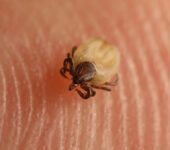
Posted On:
Category: Category:
Ticks and the Lyme Disease they carry !!!
Ticks and the Lyme Disease they carry !!!
If you’re not familiar with Lyme disease and ticks, there are a few things you should know. Long Island residents should always be prepared for a tick bite and the trouble that comes with one. By educating yourself on ticks and Lyme disease, you can learn how to minimize the danger of ticks.

If you’re not familiar with Lyme disease and ticks, there are a few things you should know. Merrimac residents should always be prepared for a tick bite and the trouble that comes with one. By educating yourself on ticks and Lyme disease, you can learn how to minimize the danger of ticks.
Which Ticks Spread Lyme Disease?
Although there are several types of ticks in Merrimac, only one type of tick has great potential to spread Lyme disease. Deer ticks are one of the only vectors of Lyme disease. And it’s worth mentioning that they are the vectors and not the cause of the disease. Only some ticks carry the disease and they don’t always spread the disease to humans.
However, Lyme disease happens far too often. The disease is serious and can result in long-term health complications. If you don’t catch the disease early enough, you may never fully recover from it. This is why education and tick prevention are so essential.
How People Get Lyme Disease
So, how does the disease spread? It all starts with one tick that carries Lyme disease. To find a new host, the tick may wait on tall grasses or a leaf. When a host walks by, the tick grabs on and climbs to a suitable location.
Once the tick finds the perfect spot, it digs its way in. Then, it doesn’t let go and starts to fill up on your blood. As the tick feeds, it could transmit Lyme disease. It’s worth bringing up the fact that ticks are capable of spreading other diseases as well.
You may not even notice a tick on you or the actual bite itself. However, you could notice a strange rash at the site of the bite. One of the telltale signs of Lyme disease is a bullseye rash. If you develop a strange rash that looks like a bullseye, you should seek immediate medical attention.
Symptoms of Lyme Disease
Typically, symptoms of Lyme disease appear anywhere from three to 30 days after a tick bite occurs. In addition to experiencing a rash, you may also have a fever, headache, and muscle aches. Everyone reacts differently to the bites, so you may not have a rash or the symptoms above.
In fact, some people don’t notice the signs of Lyme disease until months have gone by. You could have facial palsy, arthritis, or heart palpitations. It’s crucial to see a doctor and get tested for Lyme if you suspect you had an encounter with a tick and have symptoms of Lyme.
Tick Prevention
You probably don’t want to be a victim of Lyme disease. However, ticks are difficult to see and hard to avoid. By following these tips, you’re less likely to have ticks in your yard:
- Mow Your Lawn: If your lawn gets long, ticks will have places to hide. Keep your lawn short to minimize the risk of walking around your property. If you do have tall grass, wear long pants and tuck them into your socks.
- Clean Debris Piles: Piles of debris will attract rodents, which can bring ticks into your yard. To make your property less appealing to pests in Long Island, clean up piles of leaves and sticks. Don’t allow junk to accumulate, or you could have ticks hiding around.










